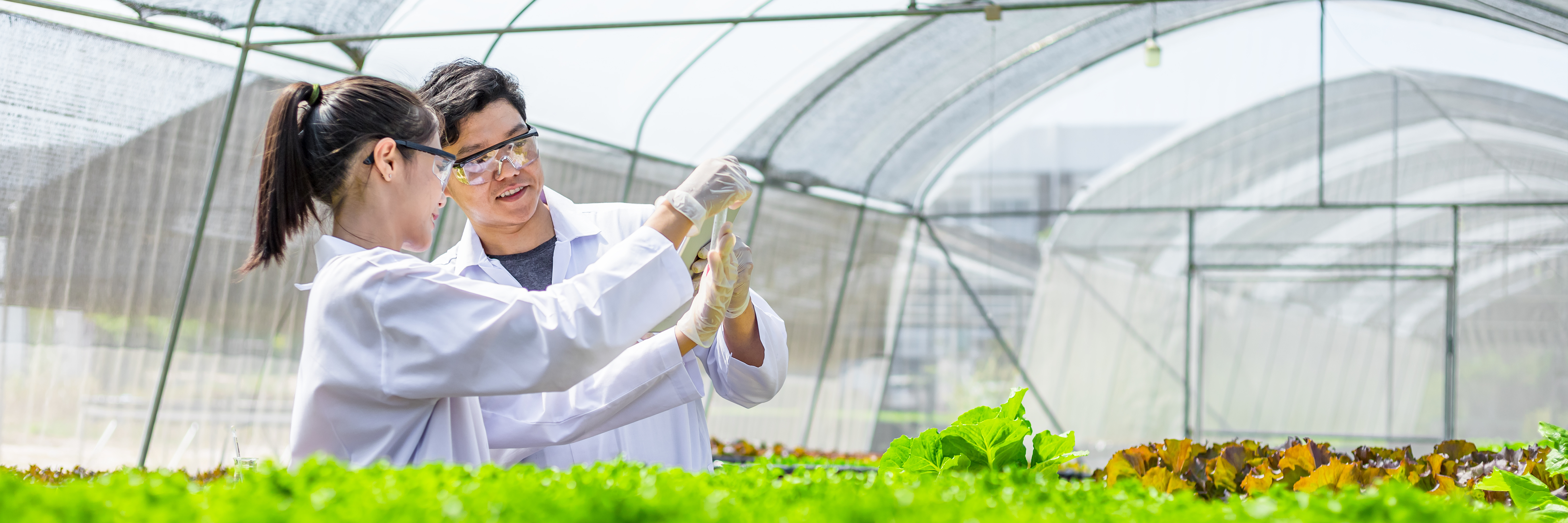
WE ARE RESEARCH
Improving Lives Through Agricultural Research
Agricultural Experiment Stations, Est. 1887
Universities across the nation engage in research, but at least one land-grant college or university per state is home to an agricultural experiment station. An agricultural experiment station is a scientific research center that investigates potential improvements to food production and agribusiness. Experiment station scientists work with farmers, ranchers, suppliers, processors, and others involved in food production and agriculture.
The Hatch Act of 1887 authorized the establishment of an agricultural experiment station in each state, which today employs about 13,000 scientists. Many states have branch stations to meet the special needs of different climate and geographical zones in those states. Federal and state governments cooperate in funding the research done at the stations, with additional income coming from grants, contracts, and the sale of products.
Meeting 21st Century Challenges with Science and Technology
By 2050, there will be nine billion people on Earth. Demographic trends indicate that this global population will be more urbanized and more concentrated in coastal communities, which are more vulnerable to severe weather, rising sea levels, and a lack of fresh water than their inland counterparts. At the same time, per capita incomes will continue to grow in many parts of the world and with them the demand for nutritious food, energy, water, and sanitation. Meanwhile, urban population growth will continue to move water away from agricultural use, increasing vulnerability to drought and famine around the world.
In the United States, the population is predicted to increase 40 percent by 2050, which will drastically increase demand for services, food, and natural resources-especially fresh water. Without drastic reductions in greenhouse gas emissions, temperatures across most of the U.S. are predicted to increase by between 3 and 6°F by 2050; rainfall patterns will change; and increases in storm intensity may bring more frequent crop failures and migrations of affected populations. As a result, the U.S. will face significant challenges to food security, human health, economic growth, job creation, and sustainable environmental and natural resources.
The challenges we face as a nation will be multiplied across our interconnected world. How will we safeguard our quality of life-including affordable food, energy security, economic opportunity, a healthy environment, and economically and socially viable communities? Guided by principles of sustainability and stewardship, the Land-Grant Universities and State Agricultural Experiment Stations have identified the key challenges and management strategies needed to address them in A Science Roadmap for Agriculture. Research conducted by the Agricultural Experiment Stations that impacts food security and human health, economic growth and job creation, and sustainable environmental and natural resources will position the U.S. for resilience in the decades to come.
Alabama
- Alabama A&M Agricultural Experiment Station
- Alabama Agricultural Experiment Station
- George Washington Carver Agricultural Experiment Station
Alaska
American Samoa
Arizona
Arkansas
- Arkansas Agricultural Experiment Station
- University of Arkansas at Pine Bluff Agricultural Research Station
California
Colorado
Connecticut
- Connecticut New Haven Agricultural Experiment Station
- Connecticut Storrs Agricultural Experiment Station
Delaware
District of Columbia
Federated States of Micronesia
Florida
Georgia
- Fort Valley State University Agricultural Research Station
- University of Georgia Agricultural Experiment Station
Guam
Hawai’i
Idaho
Illinois
Indiana
Iowa
Kansas
Kentucky
Louisiana
- Louisiana Agricultural Experiment Station
- Southern University Agricultural Research and Extension Center
Maine
Maryland
- Maryland Agricultural Experiment Station
- University of Maryland Eastern Shore Agricultural Experiment Station
Massachusetts
Michigan
Minnesota
Mississippi
- Alcorn State University Agricultural Experiment Station
- Mississippi Agricultural & Forestry Experiment Station
Missouri
Montana
Nebraska
Nevada
New Hampshire
New Jersey
New Mexico
New York
- Cornell Agricultural Experiment Station (Ithaca)
- New York State Agricultural Experiment Station (Geneva)
North Carolina
- North Carolina A&T State University Agricultural Research Station
- North Carolina Agricultural Research Service
North Dakota
Northern Mariana Islands
Ohio
Oklahoma
Oregon
Pennsylvania
Puerto Rico
Rhode Island
South Carolina
South Dakota
Tennessee
- Tennessee Agricultural Experiment Station
- Tennessee State University Agricultural Research and Extension Center
Texas
Utah
Vermont
Virgin Islands
Virginia
Washington
West Virginia
- West Virginia State University Agricultural and Environmental Research Station
- West Virginia Agricultural and Forestry Experiment Station
